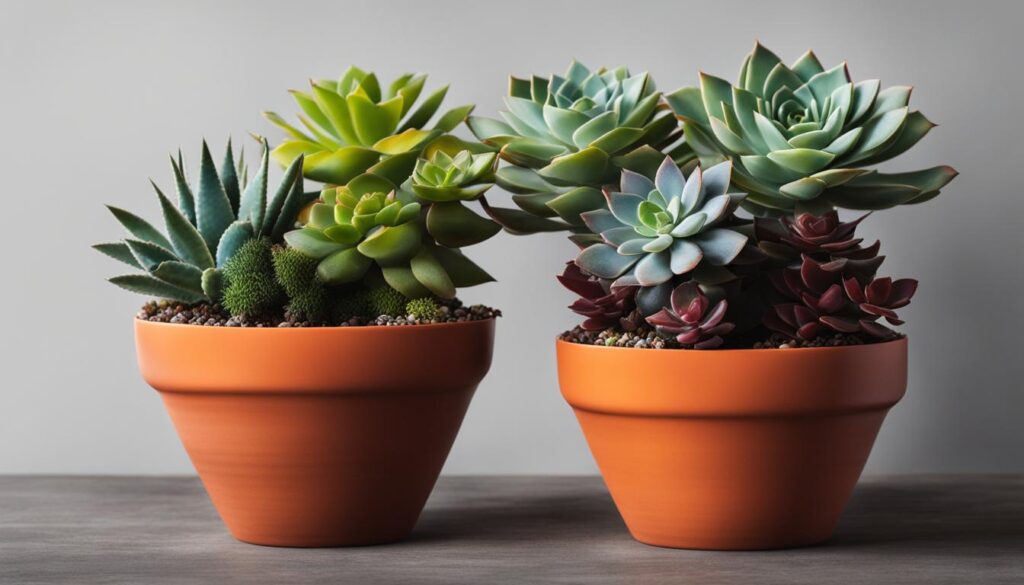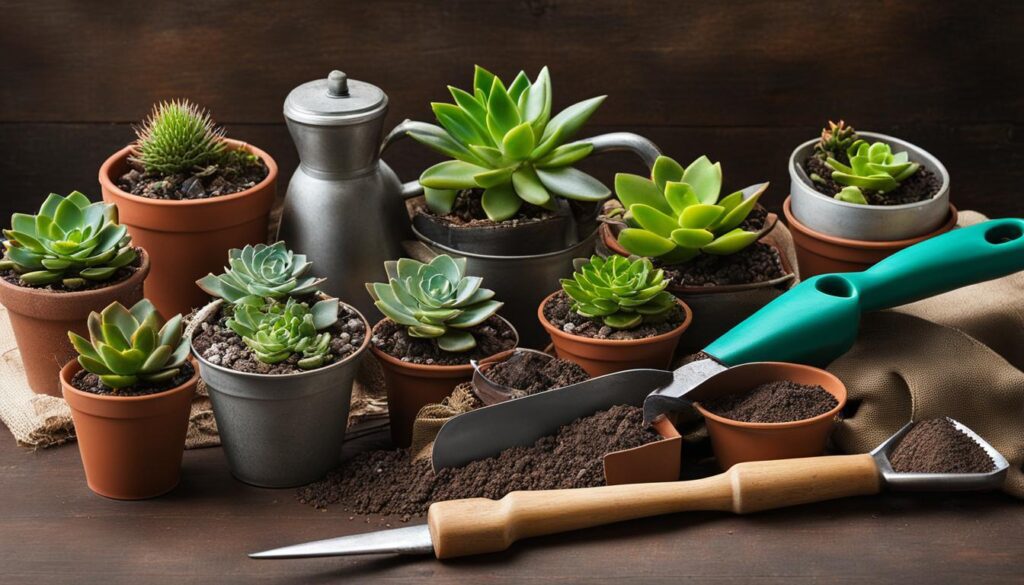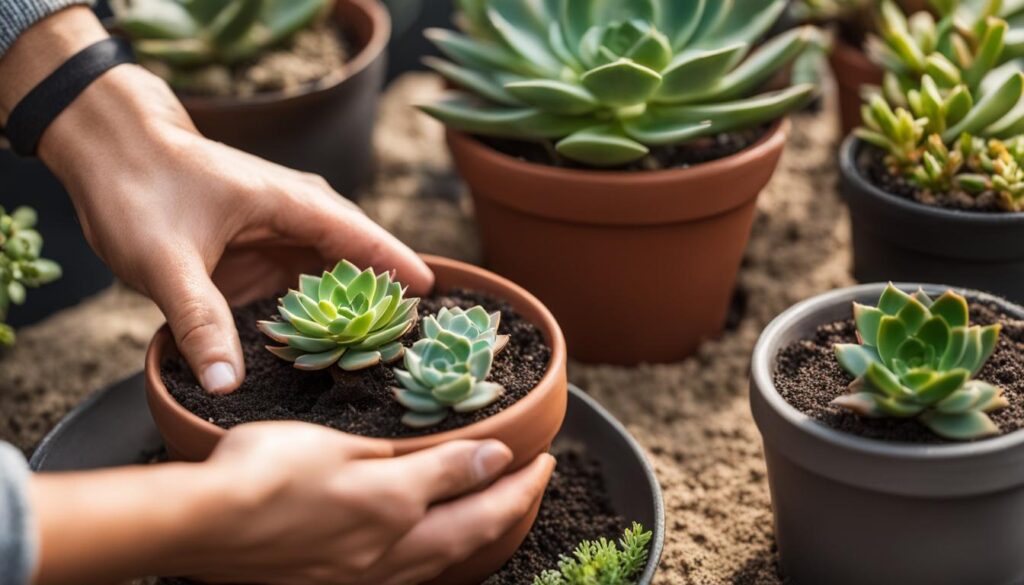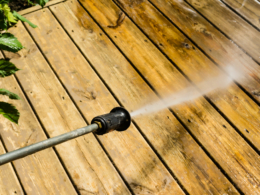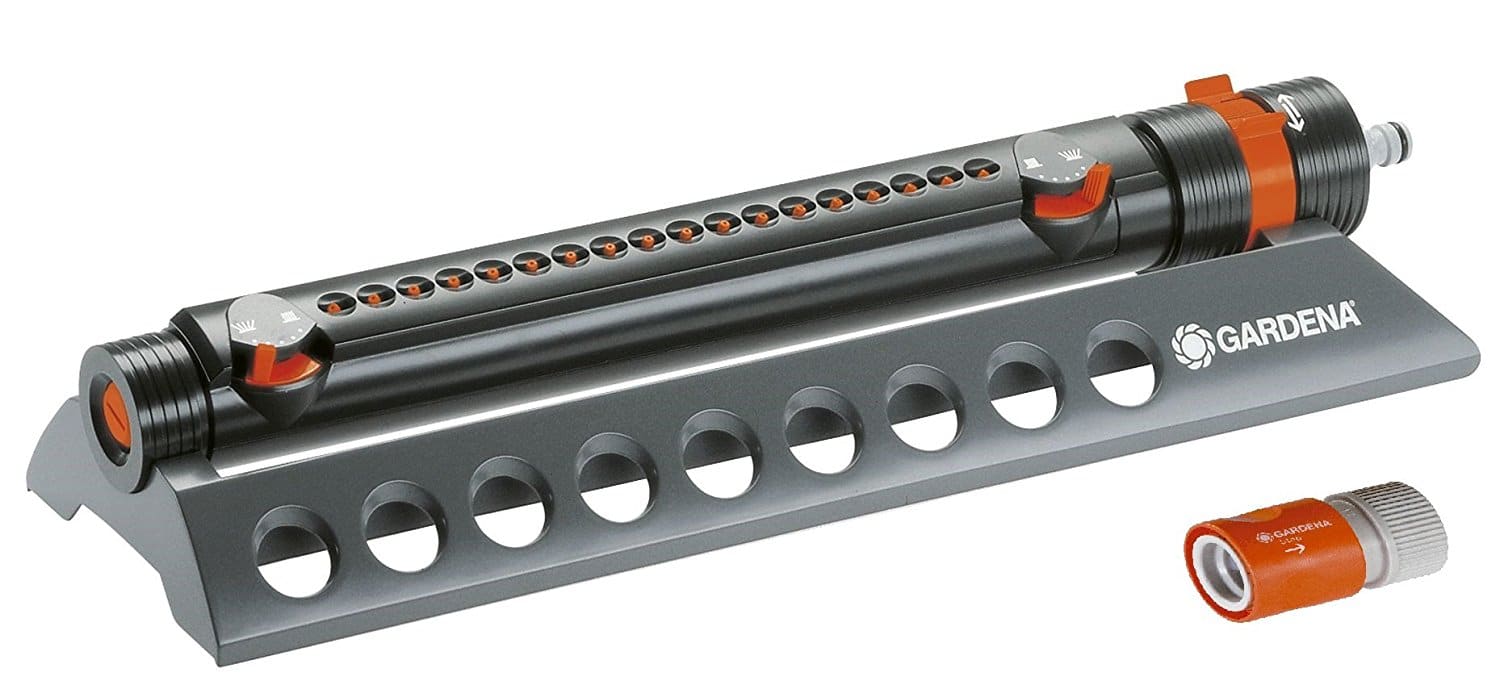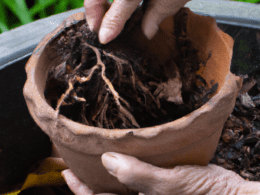Are your succulents looking a bit overcrowded and root bound? It’s time to give them a fresh start by repotting them into a new container. Repotting overgrown succulents not only helps them thrive but also allows you to create beautiful arrangements with different species and designs. In this guide, we will walk you through the step-by-step process of repotting your overgrown succulents, from recognizing the signs of overgrowth to providing the necessary care and maintenance.
Post Summary
- Repotting overgrown succulents is essential for their health and appearance.
- Signs of overgrown succulents include vertical stretching, roots protruding from drainage holes, and tight coiling at the bottom of the container.
- Tools and materials needed for repotting include scissors or pruning shears, a larger pot with drainage holes, well-draining soil mix, and optional top dressing.
- The repotting process involves gently removing the plants, trimming undesired leaves, arranging them in the new pot, and filling it with soil.
- After repotting, provide the recommended light conditions and allow the soil to dry completely before watering again.
Signs of Overgrown Succulents
If you suspect that your succulents have outgrown their current pots, there are several signs to look out for. These indicators can help you determine if your succulents are overgrown or root bound, meaning they have outgrown their containers and need to be repotted.
- Vertical stretching of stems: Overgrown succulents may exhibit elongated stems that are reaching for more light. This vertical growth is a sign that the plant is not getting enough sunlight and is trying to compensate for it.
- More space between leaves: As succulents grow, they naturally produce new leaves at the center of their rosette. If you notice more space between the leaves or the rosette becoming wider, it is an indication that your succulent is overgrown.
- Roots protruding from drainage holes: When the roots of your succulent start growing out and appearing through the drainage holes at the bottom of the container, it is a clear sign that they have outgrown their current pot.
- Roots tightly coiled around the bottom of the container: Another sign of overgrown succulents is when you see the roots tightly coiled and circling around the bottom of the pot. This indicates that the plant has become root bound and needs more space to grow.
By recognizing these signs, you can take the necessary steps to repot your overgrown succulents and provide them with a more suitable environment for healthy growth. Remember to observe your succulents regularly to ensure they have enough room to thrive.
“When the roots of your succulent start growing out and appearing through the drainage holes at the bottom of the container, it is a clear sign that they have outgrown their current pot.”
“Another sign of overgrown succulents is when you see the roots tightly coiled and circling around the bottom of the pot. This indicates that the plant has become root bound and needs more space to grow.”
Tools and Materials Needed for Repotting
When it comes to repotting overgrown succulents, having the right tools and materials is essential for a successful and smooth process. Here are the necessary items you’ll need:
- Scissors or pruning shears: These tools will come in handy for trimming back undesired leaves and stems, ensuring your succulents look their best.
- A larger pot with drainage holes: Choose a pot that is slightly bigger than the current container to accommodate the root growth of your succulents. The drainage holes will prevent water from pooling and causing root rot.
- Well-draining soil mix: Look for a soil mix specifically formulated for cacti and succulents. It should provide excellent drainage and aeration to prevent overwatering and root issues.
- Optional top dressing: Adding a top dressing, such as pebbles or decorative rocks, can enhance the visual appeal of your potted succulents, while also helping to retain moisture and prevent soil erosion.
- Gloves: While not necessary, wearing gloves can protect your hands from any potential thorns or prickly spines on the succulents.
Having these tools and materials ready will ensure that you have everything you need to repot your overgrown succulents successfully. It’s always best to be prepared before starting the process.
| Tool/Material | Description |
|---|---|
| Scissors or pruning shears | Used for trimming back leaves and stems. |
| A larger pot with drainage holes | Provides more space for succulent root growth and prevents water accumulation. |
| Well-draining soil mix | Specifically formulated for cacti and succulents, ensures excellent drainage and aeration. |
| Optional top dressing | Enhances visual appeal, retains moisture, and prevents soil erosion. |
| Gloves | Protects hands from potential thorns or spines. |
Steps to Repot Overgrown Succulents
Repotting overgrown succulents is a simple process that can help ensure the continued health and growth of your plants. Follow these steps to repot your succulents and provide them with a fresh start in a larger container:
- Remove the plants from the old container: Gently grasp the base of the stems and carefully lift the succulents out of their current pot. Be cautious not to damage the roots or break the stems during this process.
- Partially fill the new pot with well-draining soil: Choose a larger pot with drainage holes to accommodate the growth of your succulents. Fill the pot with a well-draining soil mix suitable for cacti and succulents, leaving room for the plants to be positioned.
- Prune back undesired leaves: Inspect your succulents for any damaged, diseased, or overgrown leaves. Use a pair of scissors or pruning shears to trim off these leaves, promoting healthier growth in the repotted succulents.
- Arrange the plants in the new pot: Determine the desired arrangement for your succulents, considering their size, shape, and growth habit. Place the succulents in the new pot, ensuring they have enough space between them for future growth.
- Fill the rest of the pot with soil: Once the succulents are in position, carefully fill the remaining space in the pot with the well-draining soil mix. Gently press the soil around the roots to secure the plants in place.
- Optional: Add a top dressing: For aesthetic purposes, you can add a layer of decorative rocks, pebbles, or gravel on top of the soil. This can enhance the visual appeal of your repotted succulents.
After repotting, place your succulents in the recommended light conditions and allow the soil to dry completely before watering again. This will help prevent overwatering and promote healthy root development. With proper care, your repotted succulents will thrive in their new container and continue to beautify your space.
Propagating Overgrown Succulents
If you have overgrown succulents, propagating them is a great way to rejuvenate the plants and expand your succulent collection. Propagation is the process of growing new plants from existing ones, and it can be done using various methods such as leaf cuttings, stem cuttings, or offsets.
One common method of propagating succulents is through leaf cuttings. To do this, gently remove healthy leaves from the bottom half of the overgrown succulent. Allow the cut ends of the leaves to callous for a few days to prevent rotting. Once calloused, place the leaves on top of well-draining soil in a separate container. Keep the soil lightly moist and provide bright, indirect light. Over time, new roots will emerge from the base of the leaves, and new succulent plants will begin to grow.
Another method is stem cuttings, which involve cutting a healthy stem from the overgrown succulent and allowing it to callous for a few days. After callousing, place the stem cutting in well-draining soil, burying it about an inch deep. Water the soil lightly and provide the cutting with bright, indirect light. With time, the cutting will develop roots and start growing into a new succulent plant.
| Propagation Method | Advantages | Disadvantages |
|---|---|---|
| Leaf cuttings | – Easy method for beginners – Can produce multiple new plants from a single leaf |
– Can take longer for new plants to grow – Success rates can vary |
| Stem cuttings | – Faster growth compared to leaf cuttings – Can produce larger plants |
– Requires a healthy stem for cutting – Success rates can vary |
Propagation is a rewarding process that allows you to create new succulent plants and share them with others. It’s important to be patient and provide the right care to ensure successful propagation. Remember to use well-draining soil and provide adequate light and moisture for the new plants to thrive.
Once the new succulent plants have established roots and are growing well, you can transplant them into individual pots or incorporate them into creative succulent arrangements. Enjoy the process of propagating your overgrown succulents and watching the new plants flourish!
Preventing Overgrowth in Succulents
Preventing overgrowth in succulents is essential for maintaining their size and shape. By providing the right conditions and implementing proper care practices, you can inhibit excessive growth and keep your succulents compact and visually appealing. Here are some tips to help you control the size of your succulents:
• Right Pot Size
Choosing an appropriate pot size is crucial in preventing overgrowth. A pot that is slightly larger than the root ball allows for some growth but prevents the succulent from becoming too large. Avoid using pots that are significantly larger than the plant, as this can encourage excessive growth.
• Well-Draining Soil
Using a well-draining soil mix specifically formulated for succulents can help control their growth. This type of soil allows for proper airflow and water drainage, preventing the roots from becoming waterlogged and inhibiting growth.
• Recommended Light Conditions
Providing the right amount of light is crucial for succulent growth control. Most succulents thrive in bright, indirect light. Avoid placing them in areas with intense, direct sunlight, as this can lead to rapid growth. By placing them in optimal light conditions, you can help regulate their growth rate.
• Regular Pruning
Regularly pruning your succulents can help maintain their size and shape. Trim back any undesired leaves or stems to keep the plant compact. This also helps redirect the plant’s energy to healthier growth and prevents overgrowth.
| Preventing Overgrowth in Succulents | Key Strategies |
|---|---|
| Right Pot Size | Choose a pot slightly larger than the root ball to allow for growth but prevent excessive size increase. |
| Well-Draining Soil | Use a well-draining soil mix formulated for succulents to prevent waterlogged roots and inhibit growth. |
| Recommended Light Conditions | Place succulents in bright, indirect light to regulate their growth rate and prevent rapid growth. |
| Regular Pruning | Trim back undesired leaves and stems to maintain a compact size and redirect the plant’s energy. |
By following these preventive measures, you can effectively control the size of your succulents and ensure they remain visually pleasing. Remember to monitor their growth and make adjustments as needed to accommodate their needs. With proper care and attention, your succulents will thrive while maintaining their desired size and shape.
Common Mistakes to Avoid When Repotting Succulents
When repotting your succulents, it’s important to avoid common mistakes that can harm their health and growth. By being aware of these pitfalls, you can ensure a successful repotting process and maintain the well-being of your plants.
1. Using a Pot Without Drainage Holes
One of the most common mistakes is using a pot that lacks drainage holes. Succulents are highly susceptible to root rot, and without proper drainage, excess water can accumulate in the soil, leading to soggy roots and potential fungal issues. Always select a pot with drainage holes to allow the water to freely escape.
2. Choosing Heavy or Moisture-Retentive Soil
Selecting the right soil mix is crucial for the health of your succulents. Avoid using heavy or moisture-retentive soils that can retain too much water, causing the roots to rot. Instead, opt for a well-draining soil mix specifically formulated for cacti and succulents. This will ensure proper water absorption and prevent waterlogged conditions.
3. Overwatering Immediately After Repotting
After repotting your succulents, it’s important to give them time to adjust before watering. Overwatering immediately after repotting can put additional stress on the plants and increase the risk of root rot. Allow the soil to completely dry out before watering again, and gradually resume your regular watering routine.
4. Not Providing Enough Light or Airflow
Succulents thrive in bright, indirect light and require ample airflow to prevent issues like etiolation and fungus. Avoid placing them in low-light areas or spots with poor ventilation. Providing adequate light and airflow will promote healthy growth and prevent leggy, weak plants.
By avoiding these common mistakes, you can successfully repot your succulents and ensure their long-term health. Remember to always use pots with drainage holes, choose the right soil mix, allow for sufficient drying time between waterings, and provide adequate light and airflow. With proper care, your repotted succulents will thrive and bring beauty to your space.
Caring for Repotted Succulents
Once you have successfully repotted your overgrown succulents, it is important to provide them with proper care to ensure their continued health and growth. Follow these essential aftercare tips to keep your repotted succulents thriving:
1. Placing in Recommended Light Conditions
After repotting, it is crucial to place your succulents in the appropriate light conditions. Most succulents prefer bright, indirect sunlight, so find a spot near a window where they can receive adequate light without being exposed to direct sunlight, which can cause sunburn. If you notice your succulents stretching or leaning towards the light, it may be an indication that they require more sunlight.
2. Allowing the Soil to Dry Completely
Succulents are desert plants that are adapted to dry environments, so it is essential to allow the soil to dry completely between waterings. Overwatering can lead to root rot and other issues. To determine if your succulents need water, simply insert your finger about an inch into the soil. If it feels dry, it’s time to water. If it still feels moist, wait a few more days before watering.
3. Avoiding Overwatering
One of the most common mistakes in succulent care is overwatering. Succulents have shallow root systems and are more prone to root rot if they are consistently kept wet. When watering, give your succulents a thorough soak until water drains out of the bottom of the pot, and then allow the soil to dry out completely before watering again.
Remember to monitor your repotted succulents regularly for signs of pests or diseases and take appropriate action if necessary. Providing adequate light, allowing the soil to dry between waterings, and avoiding overwatering are key to maintaining the health and longevity of your repotted succulents.
Common Mistakes to Avoid
| Mistake | Consequence |
|---|---|
| Using a pot without drainage holes | Root rot and waterlogged soil |
| Using heavy or moisture-retentive soil | Root rot and poor drainage |
| Overwatering immediately after repotting | Root rot and waterlogged soil |
| Not providing enough light or airflow | Stretching and weak growth |
Design Ideas for Repotted Succulents
Repotting overgrown succulents not only helps improve their health but also offers an opportunity to create stunning and unique succulent arrangements. With a variety of succulent species available, along with different colors, textures, and growth habits, you can let your creativity shine when designing your repotted succulents.
To create visually engaging arrangements, consider combining succulents with contrasting characteristics. Pair spiky succulents with those with rounder leaves, or mix different shades of green for a vibrant display. You can also incorporate succulents with trailing or cascading growth habits to add dimension and interest to your arrangement.
In addition to the plants themselves, you can enhance the aesthetic appeal of your repotted succulents by using decorative elements. Consider adding rocks, pebbles, or driftwood to mimic natural landscapes and create a more organic feel. These elements not only add visual interest but also help with drainage and airflow for the succulents.
Experiment with different pot shapes and sizes to create unique designs. For example, a shallow dish-shaped pot can be perfect for creating a succulent garden with multiple species, while a tall and narrow pot can showcase the vertical growth of certain succulents. Let your personal style guide your choices and have fun exploring different design ideas.
Conclusion
In conclusion, repotting overgrown succulents is a simple yet effective way to maintain the health and beauty of these unique plants. By following the step-by-step process outlined in this article and providing the right care, you can ensure the success of your repotted succulents.
Remember to choose a larger pot with drainage holes, use a well-draining soil mix, and trim back any undesired leaves. Arranging the plants in the new pot and adding a top dressing can also enhance the visual appeal of your succulent arrangement.
Once repotted, it is important to place the succulents in the recommended light conditions and allow the soil to dry completely before watering again. By providing the optimal growing conditions and regular monitoring, you can prevent overgrowth and maintain the long-term health of your succulents.
Enjoy the beauty of your repotted succulents, and take pride in the care you give to these resilient plants. With proper maintenance, your repotted succulents will continue to thrive and bring joy to your indoor or outdoor space.
Can I Repot a Succulent with a Long Stem?
Yes, you can repot a succulent with a long stem. Gently remove it from the current pot, shake off the old soil, and replant it in a well-draining mix. Trim the stem if it’s too long. Follow these instructions and learn how to care for succulent to ensure its health and growth.
FAQ
What are the signs of overgrown succulents?
Signs of overgrown succulents can include vertical stretching of stems, more space between leaves, roots protruding from drainage holes, or roots tightly coiled around the bottom of the container.
What tools and materials do I need for repotting overgrown succulents?
You will need a pair of scissors or pruning shears, a larger pot with drainage holes, a well-draining soil mix suitable for cacti and succulents, optional top dressing for aesthetic purposes, and gloves for handling the plants.
What are the steps to repot overgrown succulents?
The steps to repot overgrown succulents involve gently removing them from the old container, filling a larger pot with well-draining soil, trimming back undesired leaves, arranging the plants in the new pot, filling the rest of the pot with soil, and optionally adding a top dressing.
How can I propagate overgrown succulents?
To propagate overgrown succulents, remove healthy leaves and cuttings from the bottom half of the plant, allow the ends to callous, and then plant them in well-draining soil.
How can I prevent overgrowth in succulents?
To prevent overgrowth in succulents, use an appropriate pot size, well-draining soil, provide recommended light conditions, and regularly trim or prune undesired leaves.
What are common mistakes to avoid when repotting succulents?
Common mistakes to avoid when repotting succulents include using a pot without drainage holes, using heavy or moisture-retentive soil, overwatering immediately after repotting, or not providing enough light or airflow.
How should I care for repotted succulents?
Care for repotted succulents includes placing them in recommended light conditions, allowing the soil to dry completely before watering, avoiding overwatering, and monitoring for signs of pests or diseases.
Any design ideas for repotted succulents?
For repotted succulents, you can create beautiful arrangements by using a variety of succulent species with different colors, textures, and growth habits. Incorporate decorative elements like rocks, pebbles, or driftwood to enhance the visual appeal.
How do I conclude the process of repotting overgrown succulents?
By following the steps and providing proper care, you can ensure the success of your repotted succulents. Monitor their growth and make adjustments as needed to accommodate their needs, and enjoy the beauty and satisfaction of taking care of these unique plants.






